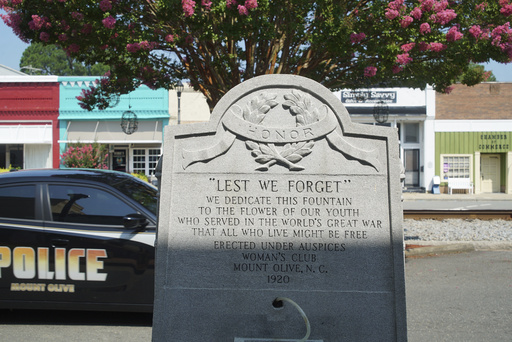“`html
MOUNT OLIVE, N.C. — A former U.S. military member, Chris Arthur, who served in the Iraq War, is now advocating for violent resistance against local law enforcement and governmental authorities, indicating a troubling shift from military service to extremist ideology.
Arthur has been active in posting videos online, warning of an impending civil war in the United States. His communist message, showcased through titles like “The End of America or the Next Revolutionary War,” expresses his belief that society is descending into disorder, necessitating a choice “to kill or be killed.”
Surrounding his farm in North Carolina, Arthur has been engaged in creating training manuals intended to assist others in forming militias. His disconcerting public demonstrations included conducting workshops to instruct attendees on activities such as kidnapping, attacking officials, and employing explosives, including constructing lethal traps calculated to cause mass harm.
Despite numerous alerts regarding Arthur’s alarming behavior from his wife’s ex-husband to military and law enforcement agencies, little was done. This oversight allowed Arthur to both manufacture and store explosive materials in a residence shared with minors, eventually leading to connections with another extremist involved in violent confrontations with the police in New York.
Arthur is not an isolated case; he belongs to a larger group of over 480 individuals with military backgrounds linked to ideologically motivated extremist offenses between 2017 and 2023. This group notably includes more than 230 arrested participants associated with the storming of the U.S. Capitol on January 6, 2021.
The rise in extreme activities has seen a marked increase among military-affiliated individuals, who are more likely to incorporate weapon training in their plots compared to their civilian counterparts, as per an analysis of domestic terrorism statistics. This data points to a concerning trend where military experience amplifies the risk of mass violence linked to ideological motivations.
According to data from the National Consortium for the Study of Terrorism and Responses to Terrorism (START), over 80% of individuals engaged in extremist plots with military ties adhered to far-right, anti-government, or white supremacist beliefs. Law enforcement has deemed the threat from domestic violent extremism as one of the most pressing security challenges in the U.S.
Efforts to mitigate extremism within the ranks of the military have not yet established comprehensive tracking systems for such activities. Internal Pentagon research, although promising, has not been adopted for identifying extremism, further complicating the landscape of potential threats.
In his secluded Mount Olive farmhouse, Arthur accumulated an arsenal of weapons, some modified to be untraceable. He created dangerous environments by rigging the property with homemade explosives, creating scenarios where young children lived in close proximity to hazardous materials. Warnings concerning the safety of Arthur’s children went unheeded as he continued to expand his militia efforts and engage with other extremists.
In early 2020, an individual with strong anti-police sentiments arrived at Arthur’s farm eager to learn combat techniques, further fostering an environment of radicalization. Service members and veterans who align with extremist ideologies, though a minute portion of the military population, pose significant risks due to their capacity for orchestrating large-scale violent actions, driven by skills honed in service.
Arthur’s dealings raised alarms as he discussed crafting elaborate traps and lethal tactics during consultations with individuals seeking to prepare for combat against government entities. These discussions were often laced with violent intentions, underscoring a shift from military duty to aspiring militia leader.
Upon being confronted by federal agents after an investigation into his activities, Arthur was arrested while attempting to sell training manuals at a gun show, revealing the depth of his extremist engagement. Law enforcement later discovered an extensive stockpile of weapons and explosive devices within his property.
After being tried and found guilty, Arthur received a 25-year sentence for charges related to illegal weapon possession and teaching extreme tactics intended for harming law enforcement. Despite this conviction, he maintains a defiant stance, casting himself as a victim of political repression and continuing to espouse extremist ideologies from prison.
Arthur’s case exemplifies the darker potential within veteran communities, highlighting a significant challenge in addressing radicalization amongst those trained for military engagement. His narrative reflects not just an alarming individual case but points to broader systemic issues within U.S. society’s struggle against rising domestic extremism, particularly among those skilled in combat.
“`



